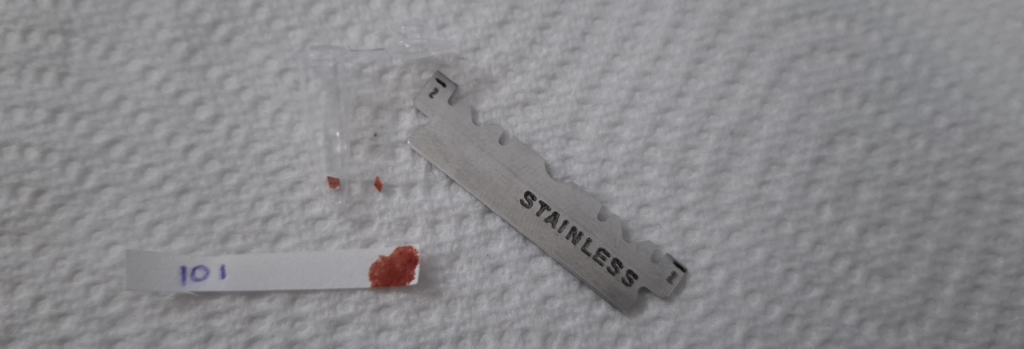Collecting dried blood spots is a common method for obtaining and transporting DNA for bird sexing.
Blood spots should be collected in a way that causes the least distress to the bird, for example by clipping a toenail close to the toe until it bleeds, pressing the tail to a piece of paper, and then stopping the blood flow with a coagulant or styptic substance. There are videos on YouTube that will show you how to do this. For this extraction method, we recommend using Whatman No. 1 filter paper or a similar chemically inert and binder-free paper.
Please note that we are not experts in animal handling, and it is your responsibility to ensure that your birds are handled safely and responsibly to avoid harm.

Once collected, the blood spots are allowed to dry and stored at room temperature. For long-term storage, sealing blood spots in bags with silica gel can help keep them dry and preserve DNA quality.
When you are ready to use the dried blood spots, sample an approximately 1 mm × 1 mm square using a clean scalpel or razor blade on a clean surface (e.g. a cutting mat/non-scratch surface), or a 1–1.5 mm diameter disk using a clean appropriately sized paper hole punch or biopsy punch.
Place the dried blood spot subsample in a PCR tube labelled on the top and side in permanent marker. One easy way to transfer the sample is to flick it into the tube with the tip of the scalpel or razor blade. You can also use tweezers if you prefer.

To avoid sample cross-contamination, clean/sterilise your scalpel/razor blade/hole punch and cutting surface between samples.
Even if you only have one sample, it’s good practice to label the tube clearly with a unique identifier for the sample used. It’s also a good idea to mark on the tube the date and to keep a note somewhere of which samples were prepared, and when.
